Update Jan 2021: Watch our new video above for a closer look at six of the buildings on this list!
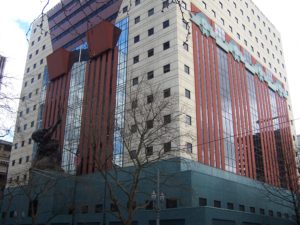 Portland lands on a lot of internet top ten lists these days, but one list it might not make is one of top architectural cities. The Rose City hasn’t been graced by a plethora of major architectural works from the likes of a Frank Lloyd Wright, Frank Gehry or I.M. Pei. Portland is a city that likes to let its nature due to the talking, and I think most of us are OK with that. Still, the city isn’t bereft of interesting buildings created by talented, if not world-famous, architects. This list isn’t a top ten nor is it presented in any particular order. It is simply a list of some of Portland’s best-known and most interesting architectural treasures.
Portland lands on a lot of internet top ten lists these days, but one list it might not make is one of top architectural cities. The Rose City hasn’t been graced by a plethora of major architectural works from the likes of a Frank Lloyd Wright, Frank Gehry or I.M. Pei. Portland is a city that likes to let its nature due to the talking, and I think most of us are OK with that. Still, the city isn’t bereft of interesting buildings created by talented, if not world-famous, architects. This list isn’t a top ten nor is it presented in any particular order. It is simply a list of some of Portland’s best-known and most interesting architectural treasures.
Portland Building – 1980
Love it or hate it, there is little argument that the Portland Building is one of the city’s most architecturally significant buildings. Regarded by many architectural critics to be the first major Post-Modern office building, the Michael Graves-designed landmark has not been a hit with the general public. We’ve written about the building before, so suffice it to say the city has an interesting relationship with the building (not to mention the incredible, but copyrighted, statue attached to it).
Jackson Tower – 1912
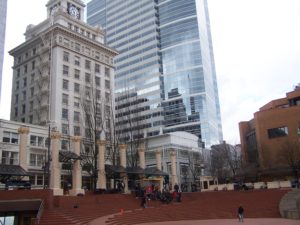 Many native Portlanders probably don’t know the name of this beautiful building, but they would instantly recognize its elegantly lighted exterior anywhere. While the block across the street, now Pioneer Courthouse Square, grabs most of the attention, it is Jackson Tower’s attractive facade and unique clock tower that make views from the Square memorable. Towers were common for newspaper buildings at that time, and indeed the building was originally built to house the offices of the The Oregon Journal, a now-defunct competitor to The Oregonian. Beautiful any time of year, Jackson Tower is especially lovely during the holiday season, when its dazzling brilliance makes a perfect backdrop for the huge Christmas tree in Pioneer Courthouse Square. The tower was placed on the National Register of Historic Places in 1996.
Many native Portlanders probably don’t know the name of this beautiful building, but they would instantly recognize its elegantly lighted exterior anywhere. While the block across the street, now Pioneer Courthouse Square, grabs most of the attention, it is Jackson Tower’s attractive facade and unique clock tower that make views from the Square memorable. Towers were common for newspaper buildings at that time, and indeed the building was originally built to house the offices of the The Oregon Journal, a now-defunct competitor to The Oregonian. Beautiful any time of year, Jackson Tower is especially lovely during the holiday season, when its dazzling brilliance makes a perfect backdrop for the huge Christmas tree in Pioneer Courthouse Square. The tower was placed on the National Register of Historic Places in 1996.
Pittock Mansion – 1914
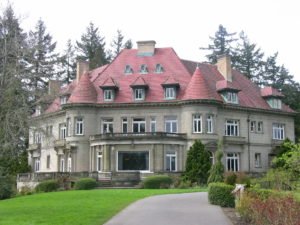 Portland’s most grand mansion can still wow visitors after one hundred years, even though the views from the prime location in the West Hills can steal the show on a clear day. Built in a bold Richardsonian Romanesque style, the mansion’s exterior is certainly worthy of the magnificent setting. This is another place we’ve talked about before, and most visitors to Portland with local friends will end up here at some point in their visit. Tours of the interior give visitors insight into what luxury looked like at the beginning of the 20th-century. A group of concerned citizens saved the mansion from destruction after it sustained damage in the Columbus Day Storm of 1964, and it was added to the NRHP in 1974.
Portland’s most grand mansion can still wow visitors after one hundred years, even though the views from the prime location in the West Hills can steal the show on a clear day. Built in a bold Richardsonian Romanesque style, the mansion’s exterior is certainly worthy of the magnificent setting. This is another place we’ve talked about before, and most visitors to Portland with local friends will end up here at some point in their visit. Tours of the interior give visitors insight into what luxury looked like at the beginning of the 20th-century. A group of concerned citizens saved the mansion from destruction after it sustained damage in the Columbus Day Storm of 1964, and it was added to the NRHP in 1974.
Pioneer Courthouse – 1875
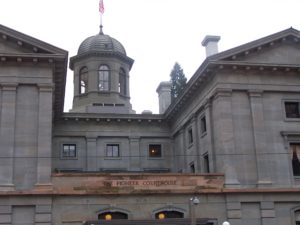 Once derided as being too far from the city’s business center (which today is called the Old Town neighborhood), Pioneer Courthouse is now the very heart of downtown Portland. Serving as a courthouse, a post office and now again as a courthouse, the building has shaken off several attempts to demolish it in order to take advantage of the full city block of prime real estate. Essentially empty in the 1950s and 60s, its ultimate restoration and reuse helped raise awareness of the possibilities of restoring other historic buildings. While entering the building can be a little imposing due to the guards, the cupola on top of the courthouse is open to the public and offers a unique view of downtown Portland.
Once derided as being too far from the city’s business center (which today is called the Old Town neighborhood), Pioneer Courthouse is now the very heart of downtown Portland. Serving as a courthouse, a post office and now again as a courthouse, the building has shaken off several attempts to demolish it in order to take advantage of the full city block of prime real estate. Essentially empty in the 1950s and 60s, its ultimate restoration and reuse helped raise awareness of the possibilities of restoring other historic buildings. While entering the building can be a little imposing due to the guards, the cupola on top of the courthouse is open to the public and offers a unique view of downtown Portland.
U.S. National Bank Building – 1916
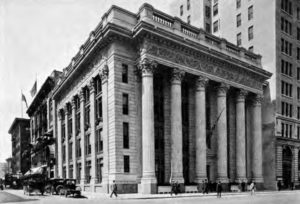
Today, most of our experience with banks involves visiting boring suburban retail branches or, for inner-city dwellers, branches filling the lobby of giant skyscrapers. But before building the tallest building in town was the best way to advertise your bank’s prowess, it was the architecture of the building that did the talking, and the U.S. Bank Building in downtown has a lot to say. The entire edifice screams safety, security and massive wealth. Built in the style of ancient Roman monument by A.E. Doyle, the building reassured its customers and passers-by that U.S. Natinal Bank could be trusted with their hard-earned money. As a testament to the actual security of their vaults, the Rose Festival crown is stored here.
Multnomah County Public Library – 1913
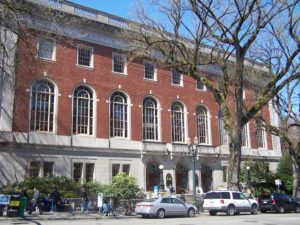 Portland takes its reading very, very seriously. These days, Powell’s City of Books gets all the attention, but just a few blocks down SW 10th is another of the county’s leading repositories of books, the Multnomah County Public Library. Another amazing building designed by architect A.E. Doyle, the library is recognized as one of the best in its field, due in part to Doyle’s collaboration with the county’s chief librarian at the time. Most casual passers-by might not be “wowed” by the building, but its simple grace is fitting for its use. One detail many people do notice is the stone inscriptions circling the building, with names of influential thinkers throughout history.
Portland takes its reading very, very seriously. These days, Powell’s City of Books gets all the attention, but just a few blocks down SW 10th is another of the county’s leading repositories of books, the Multnomah County Public Library. Another amazing building designed by architect A.E. Doyle, the library is recognized as one of the best in its field, due in part to Doyle’s collaboration with the county’s chief librarian at the time. Most casual passers-by might not be “wowed” by the building, but its simple grace is fitting for its use. One detail many people do notice is the stone inscriptions circling the building, with names of influential thinkers throughout history.
Union Station – 1896
While Portland is rightly regarded as a city that treasures its history, it has seen its share of landmark buildings destroyed to appease the appetite for automobiles. Union Station very nearly fell victim to this thinking, when Robert Moses, the infamous freeway advocate, included its demolition in his master plan for Portland. He envisioned a modern, airport-like terminal, which would now almost certainly be a 50s-era eyesore begging for demolition. Instead, timeless Union Station, with its sharp clock tower proclaiming “Go By Train”, is the highlight of the otherwise grungy Old Town area. Traveling by train evokes a bygone era, and Union Station doesn’t disappoint with an elegance both inside and outside that rewards those visiting the Rose City by train. The instantly recognizable neon signs on the clock tower weren’t original to the building, but were added in the 1940s and were almost removed for reasons of “historical accuracy” in a 1990s renovation.
Calvary Presbyterian Church (The Old Church) – 1882
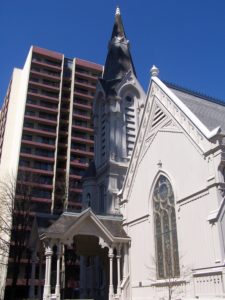 There is no shortage of historic churches in Portland, displaying a wide variety of architectural styles. None, though, evoke the spirit of the Northwest like the Calvary Presbyterian Church, usually referred to now as “The Old Church”. Built in the “Stick Gothic” or “Carpenter Gothic” style, the use of wood to mimic styles more commonly seen in other materials makes the church fit its Pacific Northwest setting much better than other, more oppressive churches made of stone or masonry. You could spend several hours poring over the amazing exterior details, and those lucky enough to take in the interior have just as much to enjoy.
There is no shortage of historic churches in Portland, displaying a wide variety of architectural styles. None, though, evoke the spirit of the Northwest like the Calvary Presbyterian Church, usually referred to now as “The Old Church”. Built in the “Stick Gothic” or “Carpenter Gothic” style, the use of wood to mimic styles more commonly seen in other materials makes the church fit its Pacific Northwest setting much better than other, more oppressive churches made of stone or masonry. You could spend several hours poring over the amazing exterior details, and those lucky enough to take in the interior have just as much to enjoy.
US Bancorp Tower – 1983
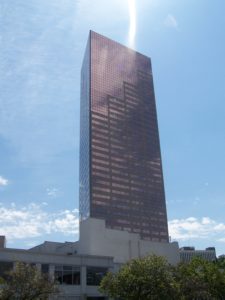 The newest building on our list is also the most easily visible and recognizable, as it is the second-tallest building in Portland and has several blocks separation from any other tall buildings downtown. Portland doesn’t love skyscrapers, and you don’t have to look further than the tallest building, the Wells Fargo Tower, to see how badly they can go. Luckily, the U.S. Bancorp Tower is somewhat friendlier to its ground-level surroundings, and much friendlier to the skyline. Built as a parallelogram, the building can seem short and squat, or tall and lean, depending on the angle it is viewed from. In addition, the light plays off the windows and granite facade in very different ways depending on the time of day. The result is a very dynamic building that often perplexes first-time visitors to the city, who often confuse it for two, sometimes even three, different buildings.
The newest building on our list is also the most easily visible and recognizable, as it is the second-tallest building in Portland and has several blocks separation from any other tall buildings downtown. Portland doesn’t love skyscrapers, and you don’t have to look further than the tallest building, the Wells Fargo Tower, to see how badly they can go. Luckily, the U.S. Bancorp Tower is somewhat friendlier to its ground-level surroundings, and much friendlier to the skyline. Built as a parallelogram, the building can seem short and squat, or tall and lean, depending on the angle it is viewed from. In addition, the light plays off the windows and granite facade in very different ways depending on the time of day. The result is a very dynamic building that often perplexes first-time visitors to the city, who often confuse it for two, sometimes even three, different buildings.
Hollywood Theater – 1925
It is hard to believe such a magnificent and bold theater marquee could be diminished by its surroundings, but the developers of a neighboring apartment block have done their best. But, atrocities aside, the Hollywood Theatre is a building like no other in Portland, and without hyperbole, the entire world. The very definition of rococo architecture, the entire facade is crammed with visual delights, reportedly even a kitchen sink (although I have yet to find it). It is rare for a single building to lend their name to an entire neighborhood, but such is the magnificence of the Hollywood Theater.

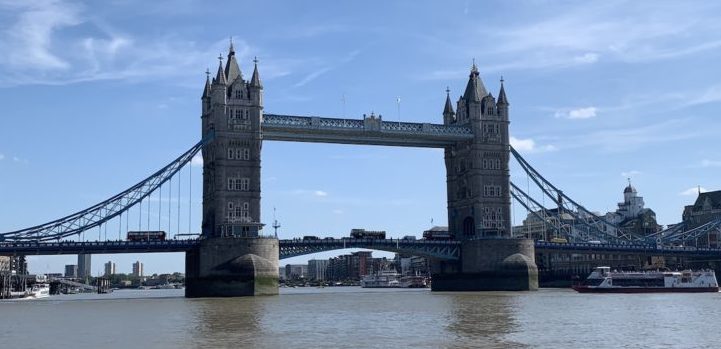
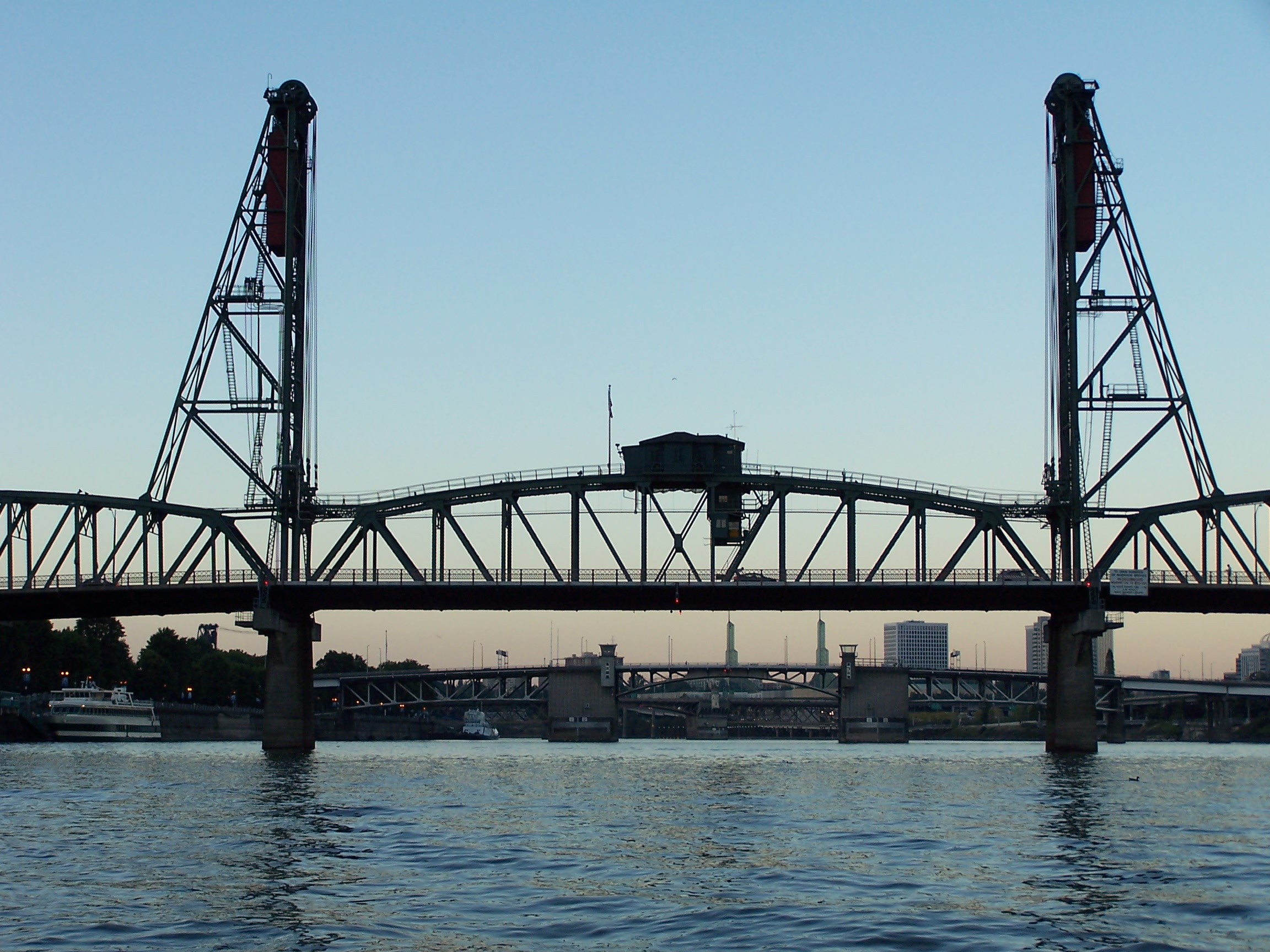
One thought on “Ten of Portland’s Top Architectural Landmarks”